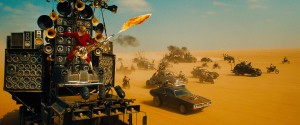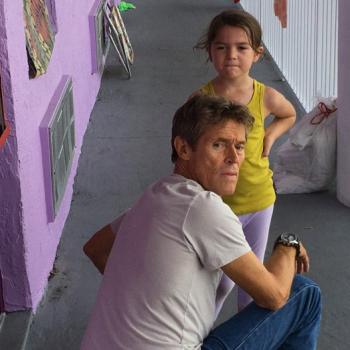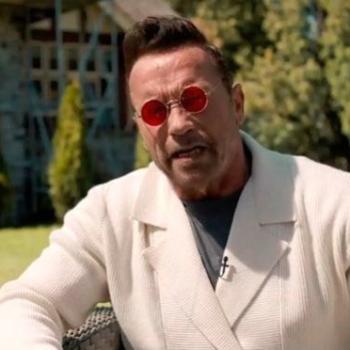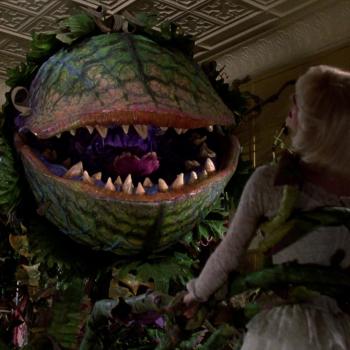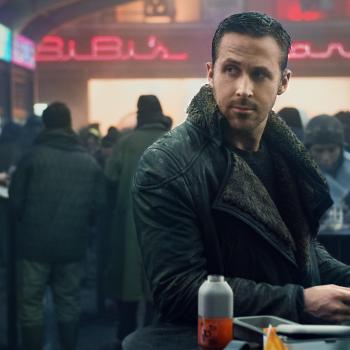The continuation of our discussion about this year’s best picture nominees.
Mad Max: Fury Road
Nominations: 10 (Best picture, director, cinematography, editing, production design, costume design, makeup and hairstyling,sound mixing, sound editing, and visual effects)
NOTE: SPOILERS FOR MAD MAX: FURY ROAD
I’ll start by posing the same question that’s been running through my mind ever since I walked out of the press screening for “Mad Max: Fury Road” last May: Can you believe this movie exists?
There was absolutely no reason to think the film would be any good. When announced, it seemed like just another attempt to push nostalgia buttons or maybe build on the car-crazy success of the “Fast and Furious” franchise. It was the fourth movie in a series whose largely derided last entry debuted 30 years earlier, directed by a man in his eighties who’d spent the last decade involved with the “Babe” and “Happy Feet” films. And unlike recent “legasequels,” which earn nostalgia points by bringing back their stars, Max himself was played by a completely different lead, trading in Mel Gibson for Tom Hardy.
And yet, “Mad Max: Fury Road” improbably became the most exhilarating, original and engaging action film of last year. The engines roar over the production logos and don’t stop until the credits roll. George Miller, revisiting the Wasteland for the first time in three decades, shows an energy and imagination that bests directors 50 years his junior as he smashes cars, dangles stuntmen and blows things up real good — much of it done practically, with CGI used to create the heightened, psychedelic atmosphere of a world that’s long descended into madness. “Mad Max” came out just a few weeks after “Furious Seven,” and somehow was able to deliver more thrilling action than a movie in which cars dropped from planes. A two-hour, almost nonstop chase, “Mad Max: Fury Road” is a loud roar of a movie that will stand in the pantheon of the great action movies alongside “Die Hard,” “The Matrix” and “The Raid.” Its influence will be felt in action movies for years to come.
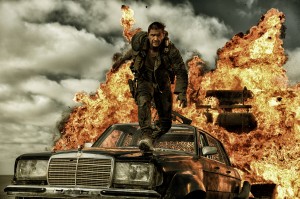
On top of that, it’s also a great film. Miller’s world-building is flawless. This is visual storytelling at its finest — just look at the details of this crazy word that he’s created. You have an entire world system built on turning people into commodities — dying boys are turned into soldiers; healthy people into blood bags; nursing women into milk maids. There’s never a moment where the film stops to explain this world, but Miller is so skilled with visuals that we pick it up without needing much exposition. You could remove all dialogue and still follow it. His direction is clear; despite the film’s dizzying pace, we’re never confused as to what’s happening and why. This is propulsive, energetic filmmaking, and it’s almost a cherry on top that the movie actually is about something — amid the burning diesel and colliding chassis, Miller’s story deals with topics of suicide bombers, human trafficking and gender roles. It’s a jam-packed movie that never feels preachy, nor does it ever feel like work. There’s a reason it was a pick for my favorite film of last year.
Much has been written about the way the film deals with gender dynamics, and I agree that it’s groundbreaking for an action series to place its male hero in the background and let a woman be the most compelling character in the story. But what sticks with me even more are the surprising acts of compassion and kindness that peek out amid the chaos. The Wasteland of “Mad Max: Fury Road,” as I said, is one in which people are commodities. Immortan Joe enslaves people to use for his own gain. He keeps women enslaved as breeders; women who are nursing supply him with milk. Captives are studied for what blood and body parts they can provide to his War Boys — young men dying of radiation poisoning who he’s taught to believe that dying in battle for him and going to Valhalla is the greatest honor they can achieve. He keeps the public captive by being their only source of water. It’s a harsh, unforgiving world (“one of fire and blood,” Max says) and it’s no wonder that even our hero is reluctant to get involved; the name of the game in the Wasteland is to just keep moving and survive.
And yet, in the carnage, compassion shines through.
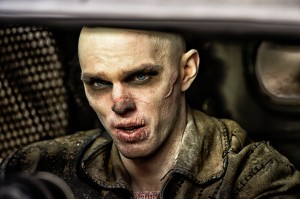
Nux (Nicholas Hoult), like the rest of the War Boys, was born with radiation sickness from nuclear fallout. He has two tumors on his neck that will likely kill him, but he doesn’t think they’ll have the time. Nux believes he will die in glory on the Fury Road at the service of Immortan Joe. He’s so ready to head to Valhalla — all “shiny and chrome” — that it doesn’t matter that he’s been injured. When the War Boys learn of Furiosa’s betrayal, Nux grabs his living “blood bag” (Max) and heads out in pursuit. He gets closest to taking Furiosa out, following her into a fiery sandstorm before he wrecks his vehicle. When he and Max encounter Furiosa and the women again, he’s eager to turn them in to Immortan Joe and receive his reward. But in what he believes will be his moment of triumph — a daring attempt to take the women while his leader watches — Nux fails badly and has to hear Immortan Joe utter words that will keep him from Valhalla: “Mediocre.”
Dejected, Nux crawls into the back of Furiosa’s war truck and waits to die. The event he’s been hoping would be the defining moment in his life was a failure. He’s embarrassed himself in front of the man who told him his only purpose was to succeed for him. And in his lowest moment, he’s encountered by Capable (Riely Keough), one of Immortan Joe’s brides. In many films, this would lead to a fight scene or reversal — Nux would find a way to kidnap the women and try to redeem himself for Immortan Joe. But Miller has a different kind of redemption in mind for Nux. Rather than fight or flee, Capable lies down next to Nux and talks to him. She sees him not as a one-dimensional person — someone whose sole purpose is to fight — but as a human. She learns about his sickness and his failure. And she doesn’t run away. She stays with him and they form a bond.
That moment of compassion reinvigorates Nux. While most films would spend the rest of the story having him vacillate between good and bad, “Mad Max: Fury Road” lets this act of compassion completely transform Nux. No longer seen as simply a War Boy and having been shown kindness, he’s eager to jump in and help. He pulls the truck out of the mud when they get stuck. He joins Max and Furiosa in their fight. In the end, he’s the one who jerks the wheel and derails the convoy so Max, Furiosa and the women can escape. He finds glory of the Fury Road, but not like he imagined — not in service of someone, as a commodity, but in sacrifice for his friends. And I can’t say enough about how good Hoult is here, letting newfound joy and determination cross his face. There’s an earnestness to him that you don’t see in high-octane action movies, and it’s incredibly refreshing.
It’s one of the film’s smaller subplots, and yet I found Nux’s story highly affecting. And it was just one of many grace notes in the last movie you’d expect to find them in. I love Furiosa’s unwavering determination to save the brides, and the way Max slowly ingratiates himself into the group. The anguish on Furiosa’s face when she finds what’s become of the Green Place. An older women teaching one of the younger brides about seeds, and the sacrifice that she makes later in the film. The way that the film doesn’t even let Max be the hero at the end of the story, letting it be Furiosa’s tale to the end. It’s one of the brides who kills Immortan Joe, and it’s Furiosa who the people in the Citadel hail as their champion at the end as Max slowly slips away. There’s a goodness and optimism that bleed through this post-apocalyptic hellscape.
And let’s not forget: all of this refreshing compassion, heroism and optism occurs in a film that features a giant truck with drummers, 100-foot-tall speakers, and a man playing a guitar that’s also a flamethrower.
Again, how does this movie exist?
Previous movies in the Oscar countdown series:

